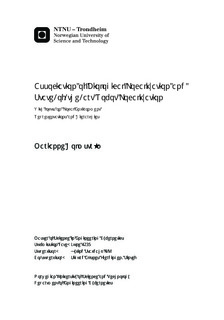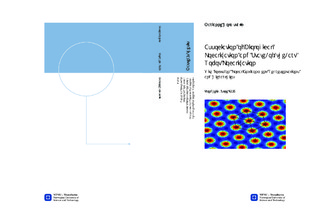| dc.contributor.advisor | Stavdahl, Oyvind | nb_NO |
| dc.contributor.advisor | Aksnes Fjerdingen, Sigurd | nb_NO |
| dc.contributor.author | Holmstrøm, Marianne | nb_NO |
| dc.date.accessioned | 2014-12-19T14:07:39Z | |
| dc.date.available | 2014-12-19T14:07:39Z | |
| dc.date.created | 2013-09-19 | nb_NO |
| dc.date.issued | 2013 | nb_NO |
| dc.identifier | 649616 | nb_NO |
| dc.identifier | ntnudaim:8870 | nb_NO |
| dc.identifier.uri | http://hdl.handle.net/11250/261010 | |
| dc.description.abstract | For many technical systems the performance of biological systems is the ultimate goal. In recent years a large body of research has been presented which reveals important mechanisms used for localization in biology. In this thesis these mechanisms are systematically presented and compared to the mechanisms used in robotic localization, through a comprehensive literature exposition and visualization of different mechanisms.The literature exposition discloses biological mechanisms used for spatial representation, localization and navigation. The findings of the exposition include a hierarchically structured spatial representation, similar to hierarchical representations used in state-of-the-art robotics systems. The way biological systems represent metric relations is disclosed, including cells which fire when the animal is at locations in the environment together forming a triangular grid. This metric representation is unlike anything seen in robotics. Furthermore, it is shown how cells are arranged in modules, which facilitates motion integration in updating the animal's location. How animals might use this modular organization for navigation is also elaborated.Three concepts of the biological spatial representation system are visualized. Geometric properties of the triangular grids are investigated by implementing a biologically inspired map, with over one hundred grids defining a local area. Simulations of this map show that with a linear increase in grids, an exponentially larger area can be represented by these grids. Another implementation demonstrate biological mechanisms for position tracking and navigation. It is further emphasized that such a system does not include a noise handling mechanism, because it is not known how motion and measurement noise is handled in biological systems. Simulation comparisons of the performance of the implemented system and a Kalman filter demonstrate the need for a noise handling mechanism in future systems.All in all, this thesis introduces interesting biological mechanisms of solutions to problems important in mobile robotics, and encourages further exploration and emulation of these complex mechanisms. | nb_NO |
| dc.language | eng | nb_NO |
| dc.publisher | Institutt for teknisk kybernetikk | nb_NO |
| dc.title | Association of Biological Localization and State-of-the-art Robot Localization: With focus on Local Environment Representations and Hierarchies | nb_NO |
| dc.type | Master thesis | nb_NO |
| dc.source.pagenumber | 150 | nb_NO |
| dc.contributor.department | Norges teknisk-naturvitenskapelige universitet, Fakultet for informasjonsteknologi, matematikk og elektroteknikk, Institutt for teknisk kybernetikk | nb_NO |

